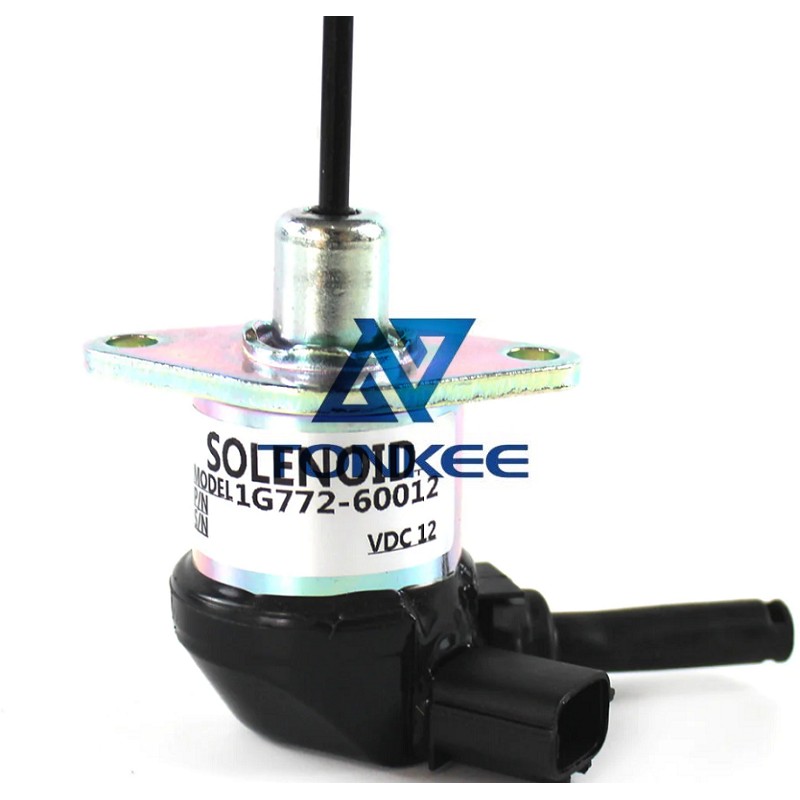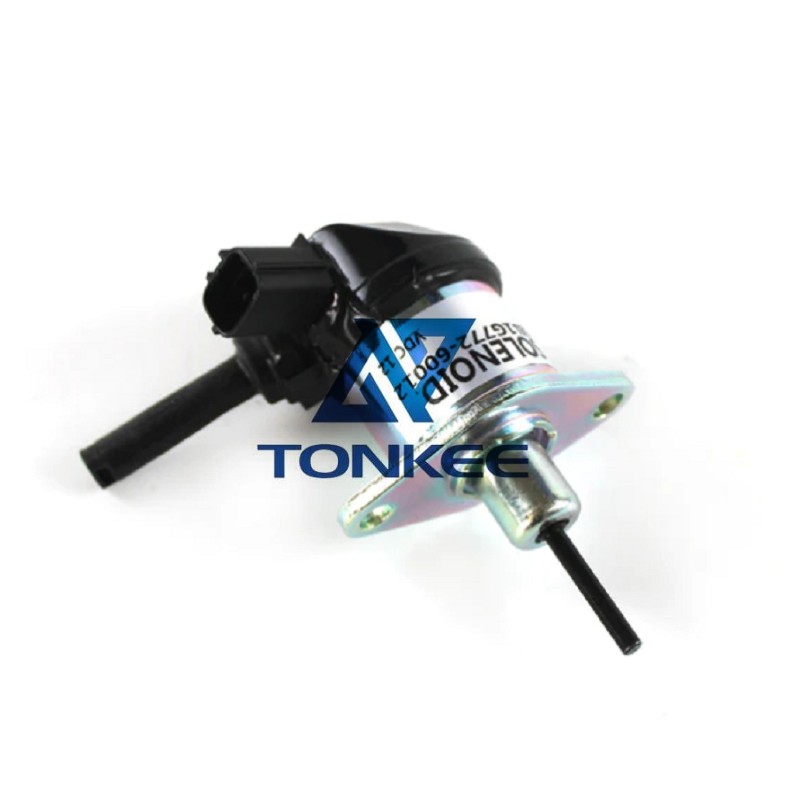
The shut-off solenoid valve is an integral part of the Kubota V3300 engine's fuel system.
Its primary function is to regulate the flow of fuel to the engine, ensuring that the fuel supply is cut off when the engine is turned off or in emergency situations. This mechanism helps prevent fuel wastage, unauthorized use, and enhances safety.
Voltage and Power Supply:
The solenoid valve operates on a 12V power supply, making it compatible with the electrical system of the Kubota V3300 engine. The 12V configuration ensures efficient and reliable performance, aligning with the electrical specifications of the engine.
Compatibility with Kubota V3300:
Designed specifically for Kubota V3300 engines, the 772-60012 and 1G772-60014 solenoid valves are engineered to meet the unique requirements and standards of Kubota diesel engines. This ensures seamless integration and optimal performance within the Kubota V3300 fuel system.
Construction and Durability:
Constructed with durable materials, the solenoid valve is designed to withstand the harsh conditions of engine operation.
The robust construction enhances the longevity of the valve, ensuring consistent and reliable performance over an extended period.
Installation and Maintenance:
The installation of the shut-off solenoid valve is a straightforward process, typically integrated into the fuel system. Routine maintenance is minimal, but regular checks are recommended to ensure proper functioning. Any signs of wear or malfunction should prompt immediate attention and, if necessary, replacement.
Emergency Shut-Off Feature:
One of the crucial aspects of the solenoid valve is its emergency shut-off capability. In case of an emergency or if the engine needs to be quickly shut down, the solenoid valve can rapidly cut off the fuel supply, contributing to safety and preventing potential damage to the engine.
Performance and Efficiency:
The solenoid valve's performance is key to the overall efficiency of the Kubota V3300 engine. By precisely controlling the fuel flow, the valve contributes to the engine's smooth operation, fuel efficiency, and compliance with emission standards.






